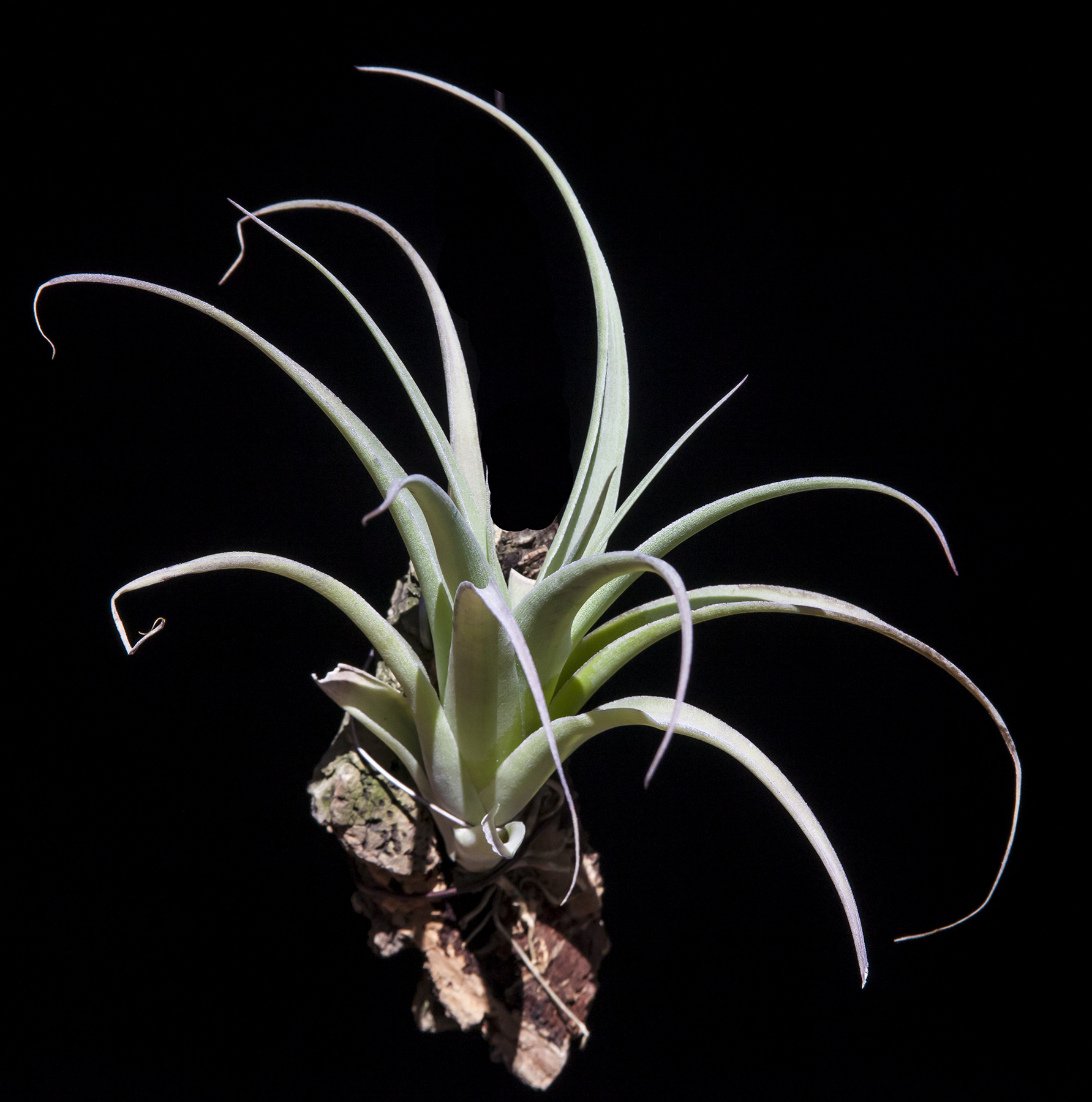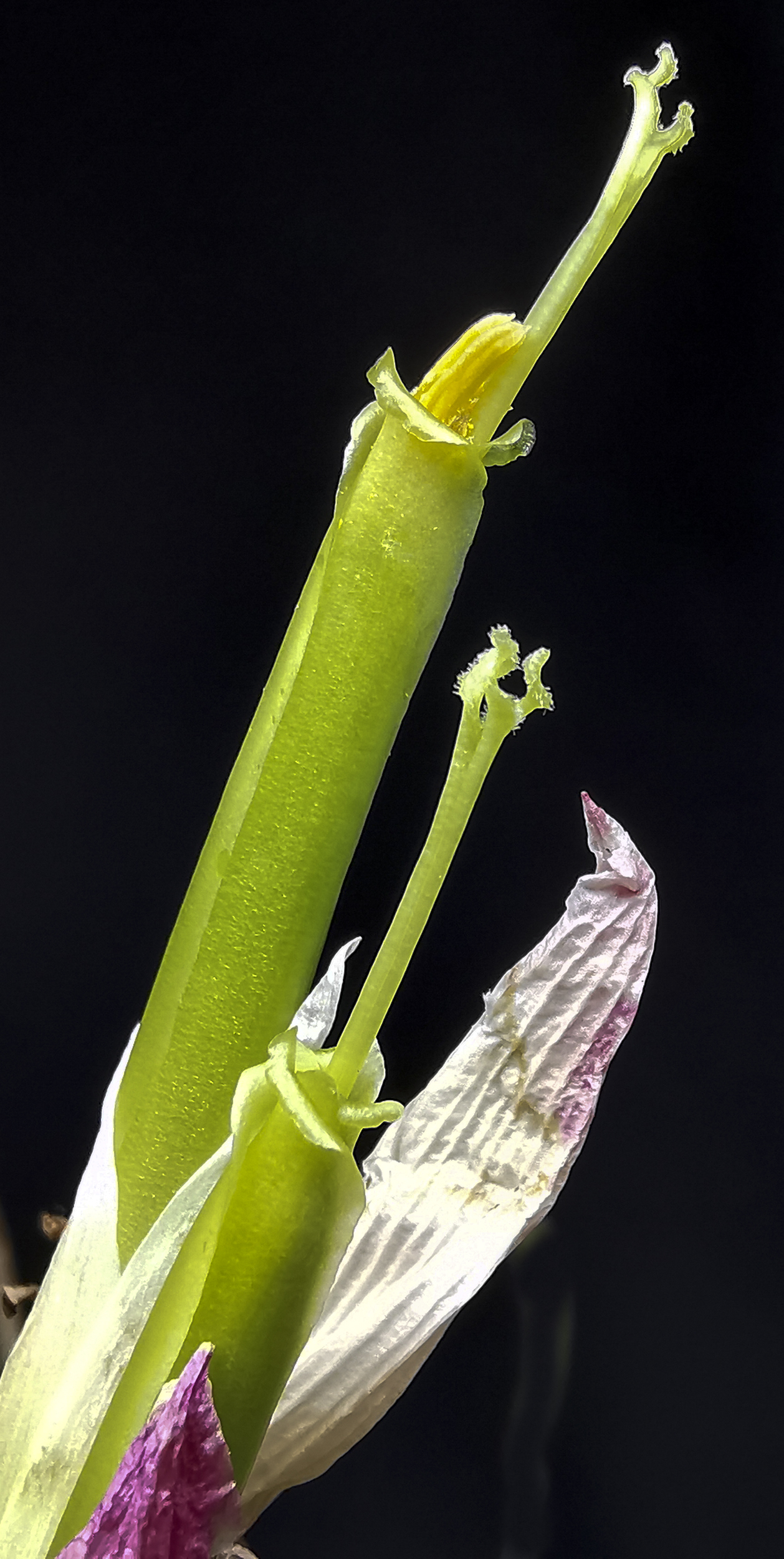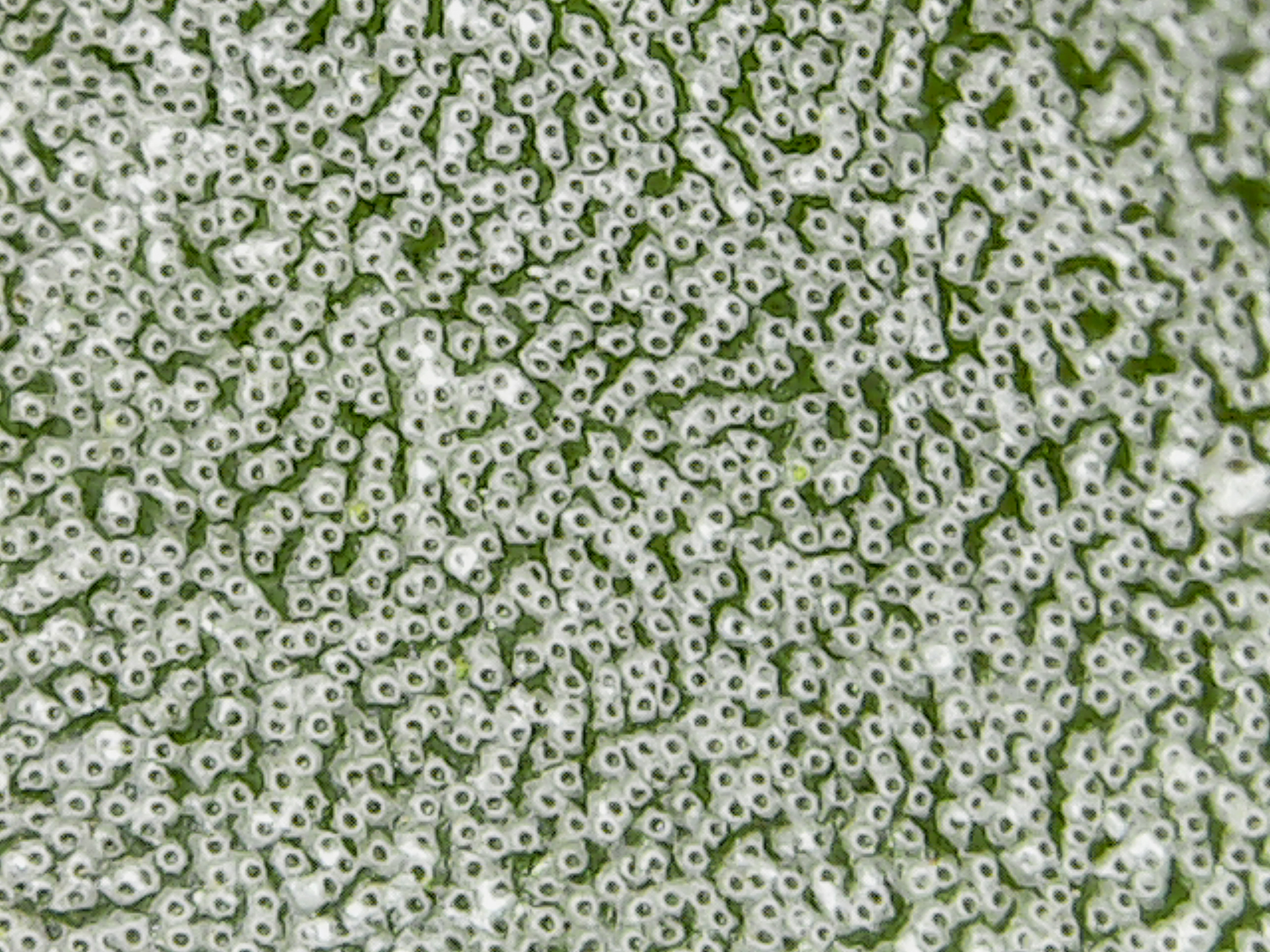Tillandsia achyrostachys - Subgenus: Tillandsia E.Morren ex Baker
With straw like spikes.


Flower - Tillandsia achyrostachys

Intricate leaf trichome pattern of Tillandsia achyrostachy
|
Native distribution and habitat: The species is endemic to the Oaxaca region of Mexico, and grows epiphytically in cloud forests at elevations of 2,000 m.
Climate: Climate guide Oaxaca
Growth habit: The plant forms a symmetrical rosette
Foliage: The soft green silver leaves gracefully re-curve downwards as in archetype G
Flowers: The plant produces amazing pink flower spikes, but there is a trick in this plant’s flowering. Just as the flowers are about to open the inflorescence loses colour and can turn a straw brown. At this point some growers feel the spike has failed and cut it off. The flowers are tubular in form with green petals. The photograph of the flower is not typical as the inflorescence tip was eaten off by an possum, but it still managed to produce a few flowers.
Seed:
Pups:
Cultivation: In warm weather, keep the plant relatively moist, cool periods keep dryer. The plant grows upside down quite well. Early morning sunlight with light shade. For me the plant has survived -C temperatures against a wall and kept dry.
Availability: This is a rare and sought after plant.
|